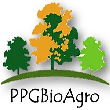Banca de QUALIFICAÇÃO: DANIEL HENRIQUE DOS SANTOS
Uma banca de QUALIFICAÇÃO de MESTRADO foi cadastrada pelo programa.DISCENTE : DANIEL HENRIQUE DOS SANTOS
DATA : 07/12/2023
HORA: 14:00
LOCAL: Google Meet (videoconferência)
TÍTULO:
Environmental and climatic interconnections: a multivariate analysis of the impacts of forest fires in the Mato Grosso Amazon
PALAVRAS-CHAVES:
Forest Fires, Remote Sensing, Environmental Damages
PÁGINAS: 61
GRANDE ÁREA: Ciências Exatas e da Terra
ÁREA: Geociências
SUBÁREA: Geofísica
ESPECIALIDADE: Sensoriamento Remoto
RESUMO:
Forest fires generate environmental damages, socio-economic, climatic, air and water quality, human health, a sharp drop in biodiversity, and high greenhouse gas emission. This study utilized remote sensing to assess interactions between fire severity and other climatic variables, the behavior of variables by mesoregion, and the identification of trends and likely points of change. The study area encompassed the Amazon biome in the state of Mato Grosso, with the following variables measured: dNBR (Burned areas and Normalized Burn Ratio), precipitation, LST (Land Surface Temperature), SPI (Standardized Precipitation Index), NDVI (Normalized Difference Vegetation Index), and VCI (Vegetation Condition Index). The statistical tests used included Shapiro-Wilk, Tukey, Mann-Kendall to check for trends, Pettitt to analyze likely change points, and finally a canonical variable test. The data followed a normal distribution, with LST being the only variable showing differentiation in means, particularly in the Northeast mesoregion. Regarding trends, only LST exhibited a significant trend with a likely change point in the year 2009. dNBR had positive correlations with NDVI and VCI and negative correlations with precipitation and SPI. Through canonical analysis, it was observed that the northern mesoregion had a positive influence on dNBR and NDVI variables and a negative influence on Precipitation, SPI, and VCI, while the southwestern mesoregion had a positive influence on dNBR and LST and a negative influence on Precipitation, SPI, and VCI. Lastly, the northeastern and southern mesoregions had positive influences on Precipitation, SPI, VCI, and LST and negative influences on dNBR and NDVI, dNBR showed a negative correlation with Precipitation and SPI, aligning with the literature and suggesting that for Amazonian vegetation, lower local humidity increases fire susceptibility and severity. LST correlated only with NDVI, indicating that local temperature can interfere with the maintenance of large-scale vegetation functionality, a global environmental concern. Canonical analysis revealed that the northern mesoregion was most affected by the variables, except for LST, as it is closest to the central Amazon Forest and experiences more significant impacts from dNBR. This region is more sensitive due to the agricultural frontier presence, with a higher frequency of fires.
MEMBROS DA BANCA:
Presidente - 265126001 - CARLOS ANTONIO DA SILVA JUNIOR
Interno - 131948001 - MENDELSON GUERREIRO DE LIMA
Interno - 131916001 - RIVANILDO DALLACORT



